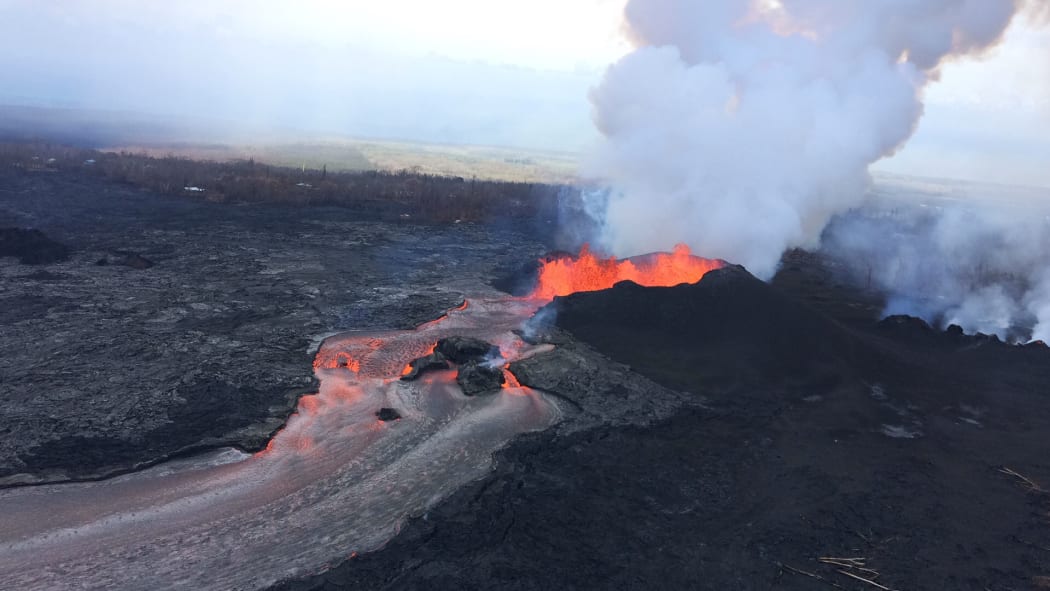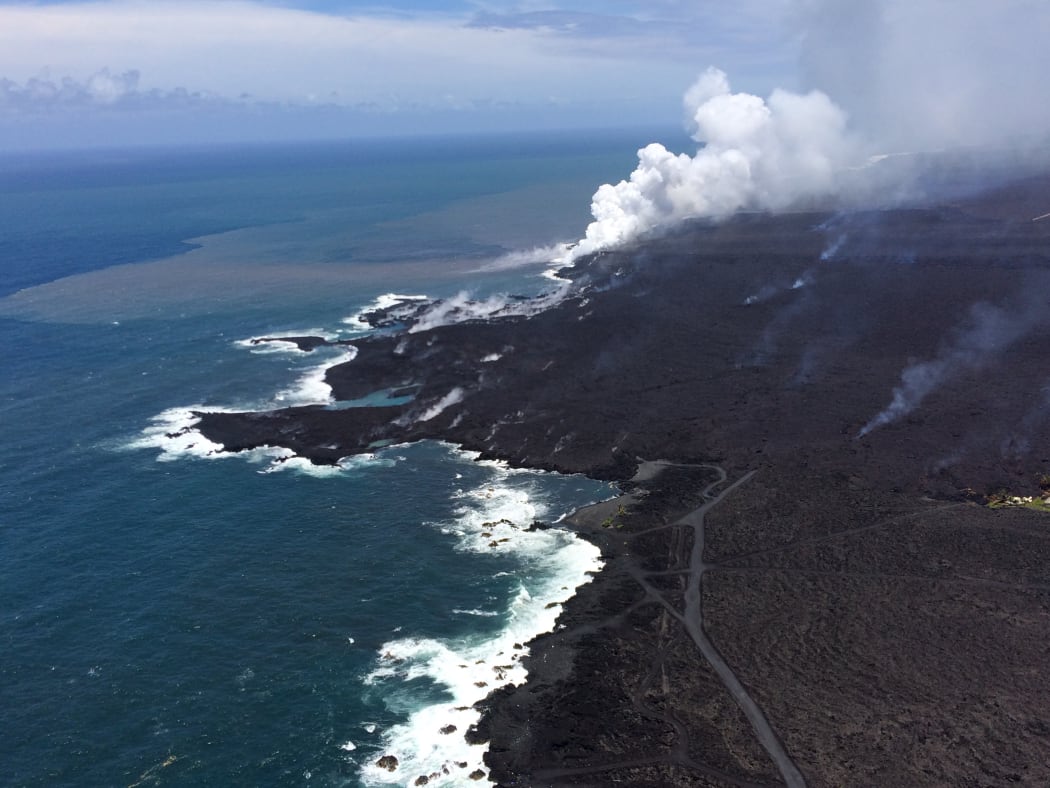Two more volcanic explosions have been recorded at the summit of Kilauea Volcano on Hawaii's Big Island.

Lava fountains at "Fissure 8" of Kilauea Volcano on Hawaii's Big Island, June 2018 Photo: U.S Geological Survey
Geologists said the activity was indicative of ongoing pressure being released.
Thousands of quakes have been recorded and past explosions have sent ash plumes as high as 3,000 metres above sea level.
United States Geological Survey geologist Janet Babb said the inner crater walls had also continued to slump inwards.
"At the summit there were two explosions overnight and lots of seismicity leading up to in between those two explosions.
"The first was at 12.46am and the second larger one was at 4.43am but even the larger one is just typical of what has been happening over the past week," she said.
Toxic gas emissions continue to be highest on the lower east rift zone and by the lava's ocean entry, according to USGS.
Fissure 8 is still active with lava fountains up to 40 metres high recorded overnight as it continues to feed a large channelized flow of lava out to the ocean.
Scale-back of emergency
Hawai'i County Civil Defense is starting to scale down its emergency response to the Kilauea volcano, but key components of its operations continue around the clock.
Civil Defense said169 homes had been destroyed by lava, but the figure was likely to rise as it excluded homes destroyed in Kapoho Bay and Vacationlands.

Lava from Kilauea Volcano has filled a 100 hectare area in Kapoho Bay Photo: U.S Geological Survey
Half of the residents of unaffected parts of Leilani Estates have now been given the okay to return to their homes, but on a 24 hour basis.
Civil Defense Administrator Talmadge Magno said they had been so busy for about a month and a half now, but priorities had changed.
"We don't need as much personnel to be monitoring 24 hours so the checkpoints, we will scale down that aspect.
"We have released some of the big air assets realising that we won't have the mass evacuation that might have happened if an area got isolated and maybe was going to be inundated.
"Some of the administrative portions of it, you will see we have scaled that down and call levels we have cut back and we have reduced all those numbers," he said.

